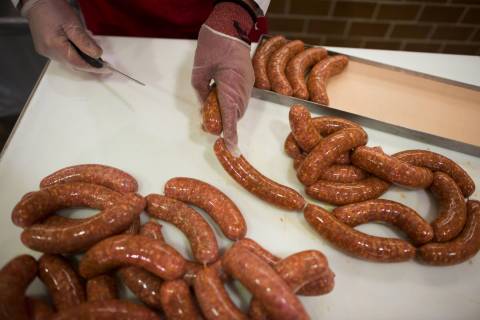(Bloomberg) -- Hot dogs and sausages grilled during this year’s US Fourth of July holiday will likely contain a little more pork and a little less beef.

Pork has become a relative bargain in the US thanks to low demand and plentiful supply that’s only increasing as American farmers trim hog herds due to soaring feed costs. Pork trimmings have risen 16% this year compared with beef’s 84% surge to seasonal all-time highs, according to market analysis firm Urner Barry.

That is frankly giving pork an edge in the meat-processing business, since it can be used interchangeably with beef in products such as wieners and encased meats.

“Processors might choose to utilize pork over beef in sausages and hot dogs this summer,” said Courtney Shum, a livestock analyst at Urner Barry, noting that beef’s “wide premium” over pork is driving the switch.
More pork should be hitting the market soon: Some 66,000 sows were slaughtered in the US last week — the largest total in more than two years. Slaughtering the mother pigs means fewer piglets will be born, so there’s more meat now and fewer animals in the future.
Read More: Hog Herds to Shrink as US Farms Lose Money, Smithfield Warns
This dynamic has already been playing out in the cattle and beef sector, as years of drought in the southern US Plains prompted ranchers to sell off cows. Now, with drought creeping into the Midwest and impacting 64% of the corn crop, hog farmers are faced with hard decisions that could stem financial losses, but limit future opportunities that tighten available meat supplies.
The US Department of Agriculture is expected to show a 0.6% decline in the American hog herd as of June 1 from a year earlier in its quarterly report due Thursday while further declines could show up in its September report, according to analysts surveyed by Bloomberg.
--With assistance from Dominic Carey.
More stories like this are available on bloomberg.com
©2023 Bloomberg L.P.
Author: Michael Hirtzer
